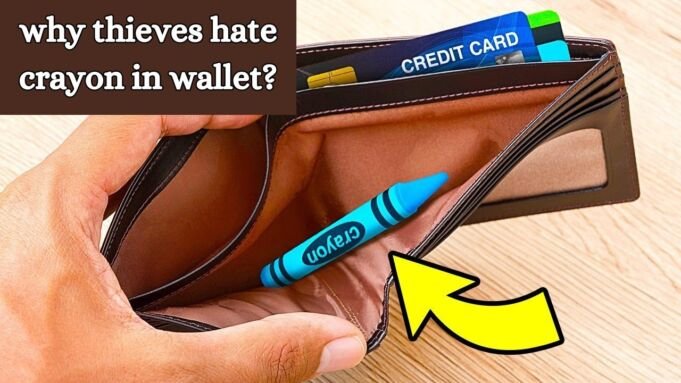When we think about safeguarding our possessions from theft, our minds typically jump to advanced security systems, robust locks, and intricate passwords. But there’s a surprisingly simple yet effective tool that can help deter thieves and protect our wallets – a crayon. Yes, you heard that correctly! This unassuming coloring tool can significantly contribute to preventing theft and securing our valuables.
In this article, we’ll delve into why thieves despise finding crayons in wallets and how this unexpected method can revolutionize your approach to theft prevention.
The Psychology Behind Theft
Before exploring why thieves detest crayons in wallets, it’s crucial to grasp the psychology behind the theft. Most thieves are opportunistic, seeking easy targets and quick wins with minimal risk. By complicating their task or reducing the reward, we can effectively discourage them from choosing us as their next victim.
The Power of Perception
Perception is key in deterring thieves. When a potential thief spots a wallet with a crayon inside, it sends a strong message – this wallet isn’t worth the hassle. The crayon suggests that the owner is detail-oriented and takes preventative measures. This impression alone can be enough to discourage a thief from trying to steal the wallet.
Visual Deterrence
Thieves depend on stealth and anonymity to succeed in their activities. Adding a crayon to a wallet disrupts their expectations and acts as a visual deterrent. The bright colors of the crayon attract attention, making it more difficult for thieves to blend in or remain unnoticed. This increases the likelihood that someone will notice their suspicious behavior and alert the authorities.
Unconventional Nature
Thieves are familiar with traditional security measures like locks and alarms. However, the unconventional tactic of placing a crayon in a wallet can catch them off guard. This surprise introduces unpredictability, causing them to question their assumptions and strategies. This uncertainty alone can be enough to deter them from targeting a wallet containing a crayon.
Disrupting Stealth and Anonymity
Unconventional Tactics and Their Impact
Real-World Examples and Anecdotes
Practical Tips for Implementing This Strategy
If you’re interested in trying this method, here’s a simple step-by-step guide:
Choose a Bright Crayon: Select a crayon in a bright, noticeable color.
Place it in Your Wallet: Position the crayon in a visible part of your wallet, such as the billfold or a transparent card slot.
Combine with Other Precautions: While a crayon can be effective, it’s best used in conjunction with other security measures like RFID-blocking sleeves or secure zippers.
Regular Checks: Periodically check that the crayon remains in place and hasn’t been damaged.
Other simple and unconventional methods to deter theft include using dummy wallets, securing wallets with rubber bands to make them harder to remove from pockets, and carrying wallets in front pockets rather than back pockets.
Conclusion
Using a crayon in your wallet can be a surprisingly effective way to deter thieves. By understanding the psychology of theft and leveraging the power of perception, we can create a strong deterrent with a simple crayon. This method disrupts thieves’ expectations and introduces an element of unpredictability, making them less likely to target your wallet.
















[…] Read: Why Thieves Hate Crayon In Wallet? […]
Comments are closed.